€6.00
Out of stock
Wexford Lamb Meatballs marinated in a garlic and herb. These meatballs can be served with not just spaghetti, try roasted veg, quinoa, penne pasta, greek salad or even a sub roll.
Irish sheep and lamb are outdoors all year round, foraging on rich mountain plants and moss which makes Irish lamb is the most nutritious lamb in the world.
Lamb is a type of meat that comes from sheep. Meat from sheep, referred to as lamb from animals up to twelve months old and mutton thereafter. It has been consumed by humans for thousands of years and has played a significant role in various cultures and cuisines around the world.
The domestication of sheep, and subsequently the consumption of lamb, originated in the Middle East around 10,000 years ago. Sheep were valued for their milk, wool, and meat. The ancient Egyptians, Greeks, and Romans were known to have enjoyed lamb as part of their diets.
In many cultures, lamb has been associated with religious and cultural traditions. For example, in Judaism, lamb is an important part of the Passover meal, symbolizing the sacrifice made during the exodus from Egypt. Similarly, in Christianity, lamb is often associated with Jesus Christ, who is referred to as the “Lamb of God.”
In terms of culinary traditions, lamb is commonly used in Mediterranean and Middle Eastern cuisines. In Greece, for instance, lamb is a staple meat and is used in various dishes, such as souvlaki and moussaka. In the Middle East, lamb is often used in kebabs and kofta.
Lamb is known for its distinctive flavour and tender texture. It can be cooked in various ways, including roasting, grilling, braising, and stewing. Lamb dishes are often seasoned with herbs and spices, such as rosemary, thyme, garlic, and cumin, to enhance the flavor.
In recent years, there has been a growing interest in sustainable and ethical farming practices, which has led to an increased demand for organic and grass-fed lamb. These practices focus on ensuring the well-being of the animals and the environment, as well as producing high-quality meat.
Grazing Animals: Sheep are herbivores and are mainly fed a diet of grass and forage. This grazing behaviour contributes to the unique taste and nutritional profile of lamb.
Cultural Significance: Lamb holds religious and cultural significance in various traditions. It is often associated with Easter celebrations in Christian communities and is a prominent part of many festive meals.
Global Lamb Production: Australia and New Zealand are two of the largest producers and exporters of lamb in the world. They have extensive grasslands and a long tradition of sheep farming.
Seasonal Availability: Lamb is commonly consumed in the spring and early summer when lambs are typically born. This availability coincides with the tradition of Easter feasts and festive meals.
International Lamb Dishes: Lamb is a key ingredient in many popular international dishes. Examples include Greek moussaka, Indian rogan josh, Moroccan lamb tagine, and Turkish doner kebab.
Sustainable Farming: Sheep farming can have environmental benefits when managed sustainably. Sheep naturally graze on grasses, helping to maintain pastures and support biodiversity.
An average portion of lamb contains 50% of the protein an adult needs in a day, this helps you grow, strengthen and maintain your muscles.
Whether you are watching your blood pressure, heart health or just want to eat healthily, remember fresh lamb is naturally low in salt.
Lamb is high in vitamin B3 and vitamin B12 which are needed for normal metabolism and nerve function.
The iron in red meat such as lamb is the most easily absorbed form of dietary iron which is an essential ingredient in healthy blood to carry oxygen around the body.
Lamb is high in zinc. Both zinc and iron have important roles in maintaining a strong immune system.

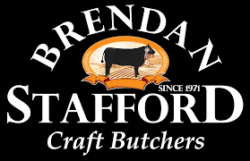

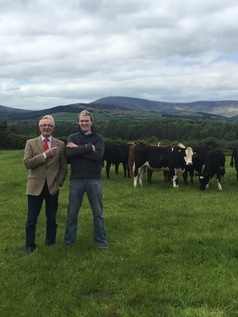






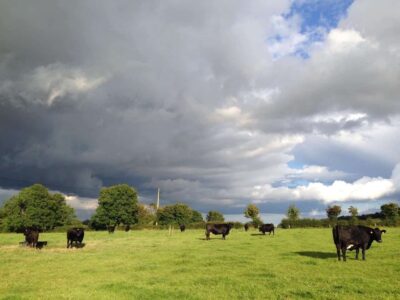
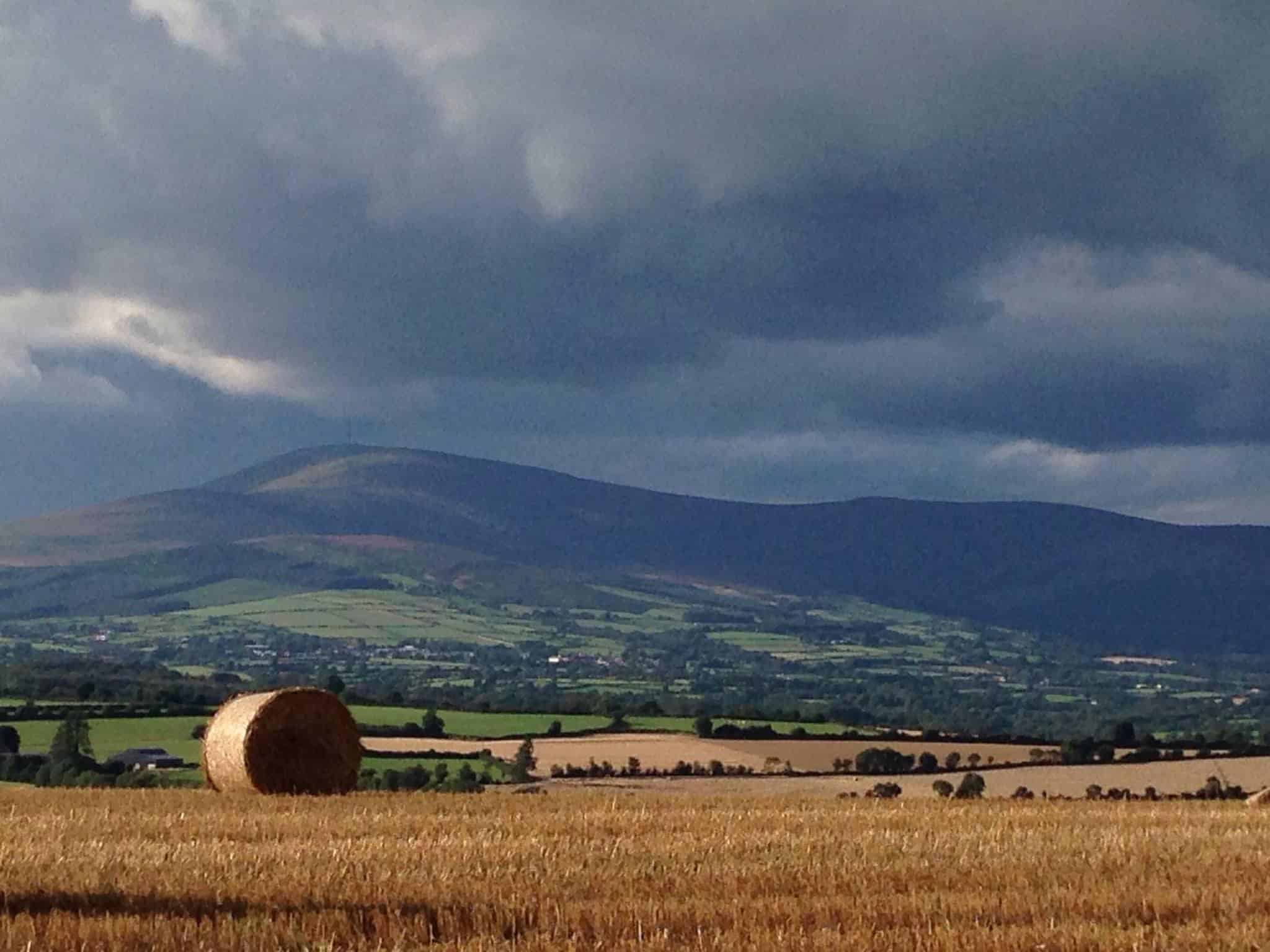





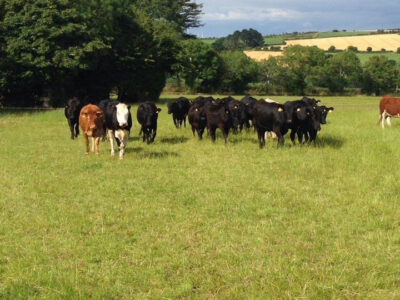
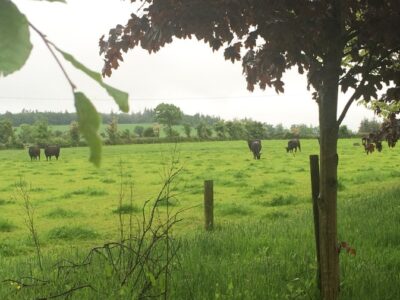
Stafford’s Butchers is family run and owned. We hand-rear our own Angus cattle on our farm in Killanne. Killanne for those people who don’t know, is a slice of heaven situated in the foothills of the Blackstairs Mountains in the County of Wexford.
It is a place where community is important and neighbours are good friends, it has stunning scenery and top quality grass. We may be biased but we have been told that you can taste the difference in our tender beef and steak. Our beef is literally delivered from our gate to your plate.
Stafford’s butchers was founded by Brendan Stafford in 1971. In 1961, aged 16 Brendan started in the butcher business – ‘I started my trade in Moore Street before moving home to Wexford’. Brendan set up his business in Enniscorthy and has always promoted traditional breeds of cattle like Hereford & Angus.
“For good quality beef you need the traditional breeds of cows, the bit of fat on these cattle gives the meat the perfect flavour. We find meat is lacking in flavour in the big continental animals, so we go for the young traditional cattle which have a lot of flavour.”
Brendan’s son Killian is now in control of the business, while Brendan looks after the farming and producing quality beef which we supply to all our customers.
“We pride ourselves on top quality produce, we have always maintained keeping the best quality of meat because if you cut the quality of your meat you’re just the same as everyone else, you need to stand out from the crowd.”
We have always promoted traditional breeds of cattle like Aberdeen Angus. “For good quality beef you need the traditional breeds of cows, the bit of fat on these cattle gives the meat the perfect flavour.” Angus beef develops with better marbling than most cattle. Marbling is the amount of intramuscular fat. Most people agree that marbling improves flavour, tenderness, and keeps meat moist while cooking (especially at high temperatures).
Heifer beef is more tender and it’s a sweeter beef so this is why we only breed heifers. We definitely believe in quality over quantity, we could breed a bigger amount of cattle but we only keep the best.
In most supermarkets they wet age their beef so it don't lose moisture and weight, which means more profit. We use traditional method of dry ageing our beef for 40 days, this gives the beef better flavour and much more tender.
We are a proper Butcher’s, in that we have all the traditional cuts of meat. We have T-Bones, Rib Roast on the Bone, our own Dry Aged Steak, Striploin and we also have some of the more traditional cuts that are making culinary comebacks like Oxtail, Beef Kidneys,
We take great pride in our skill, ask us for advice on how to cook these traditional cuts. In a real butcher’s, meat has meaning.
We stock the best quality Wexford Lamb, we have all the traditional cuts of lamb available in the shop, Racks of Lamb, Shoulder of Lamb, Legs of Lamb. We also have very tasty homemade Lamb burgers and Lamb Meatballs as well.
Thanks to the mild Wexford weather, lamb spends most of the year outside and therefore is primarily fed off grass, making it almost organic.
Lamb is high in essential minerals, proteins and vitamins necessary for good health. It is extremely rich in Vitamin B12 and Vitamin D, very rich in Zinc, high in CLA’s and rich in desirable Omega-3 fatty acids. All in all, lamb is a perfect meal choice for all the family.
Lamb is very versatile – whether you’re preparing a quick midweek meal or a dinner for family or friends, the sweet distinctive flavour of lamb is sure to put a smile on everyone’s face.
Our award–winning pork, bacon and sausage products are all made using superb quality 100% Irish pork. The pork is from pigs selected from our trusted local farmers.
At Stafford’s we home cure our own rashers, they look and taste how rashers should, how they used to taste! Our Home Cured rashers are lower in Salt so are healthier too! We don’t add any extra water, they are home cured in the traditional way by us, using only the best 100% Irish bacon. You really have to taste them!
Another speciality at Stafford’s is our Gold Medal Award Winning sausages. These are made daily on the premises in a range of flavours.
Killian devised a banger with a unique black pepper and red onion flavour that wowed the critics from the Associated Craft Butchers of Ireland.
All our Chicken is locally sourced and we support Bord Bia Quality Assured Farms, where animal welfare is of paramount importance. Our Chickens come form a local supplier Ray Keogh Foods, and we have great value whole birds as well as Free Range birds. Our chicken breasts are full of chicken, not pumped full of saline solution, which means they stay firm and fleshy when cooked, yet remain satisfyingly moist, too. We make our own Chicken Stir-fry from our fresh vegetables delivered daily, and the best quality Chicken breasts.